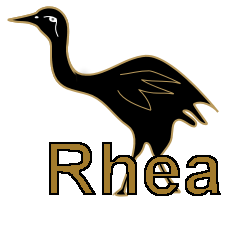| Line 3: | Line 3: | ||
Section 7.1 #24 | Section 7.1 #24 | ||
| − | a.)Let a(n) be the number of bit strings of length n containing 3 consecutive 0's. The string could begin with 1 and then be followed by a string of length n-1 containing 3 consecutive 0's, or it could start with 01 followed by a string of length n-2 containing 3 consecutive 0's, or it could start with 001 | + | a.)Let a(n) be the number of bit strings of length n containing 3 consecutive 0's. The string could begin with 1 and then be followed by a string of length n-1 containing 3 consecutive 0's, or it could start with 01 followed by a string of length n-2 containing 3 consecutive 0's, or it could start with 001 followed by a string of length n-3 containing 3 consecutive 0's, or it could start with 000 followed by any string of length n-3. These are all the possibilities of how the string could start. So, the recurrence relation is |
| − | a(n)=a(n-1)+a(n-2)+ | + | a(n)=a(n-1)+a(n-2)+a(n-3)+2^n-3. |
| − | b.)Because there are no strings of length 0,1,2 containing 3 consecutive 0's the initial conditions are a( | + | b.)Because there are no strings of length 0,1,2 containing 3 consecutive 0's the initial conditions are a(1)=0 a(2)=0 a(3)=1 |
c.)Using the recurrence relation and the initial conditions we can find a(7): | c.)Using the recurrence relation and the initial conditions we can find a(7): | ||
| − | |||
a(4)=1+2^1=3 | a(4)=1+2^1=3 | ||
a(5)=3+1+2^2=8 | a(5)=3+1+2^2=8 | ||
| − | a(6)=8+3+ | + | a(6)=8+3+1+2^3=20 |
| − | a(7)= | + | a(7)=20+8+3+2^4=47 |
Revision as of 08:33, 3 March 2009
Section 7.1 #24
a.)Let a(n) be the number of bit strings of length n containing 3 consecutive 0's. The string could begin with 1 and then be followed by a string of length n-1 containing 3 consecutive 0's, or it could start with 01 followed by a string of length n-2 containing 3 consecutive 0's, or it could start with 001 followed by a string of length n-3 containing 3 consecutive 0's, or it could start with 000 followed by any string of length n-3. These are all the possibilities of how the string could start. So, the recurrence relation is
a(n)=a(n-1)+a(n-2)+a(n-3)+2^n-3.
b.)Because there are no strings of length 0,1,2 containing 3 consecutive 0's the initial conditions are a(1)=0 a(2)=0 a(3)=1
c.)Using the recurrence relation and the initial conditions we can find a(7):
a(4)=1+2^1=3
a(5)=3+1+2^2=8
a(6)=8+3+1+2^3=20
a(7)=20+8+3+2^4=47

